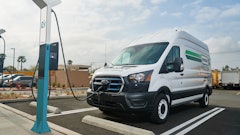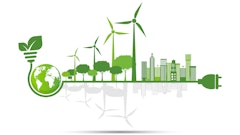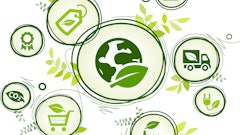
Given the issues faced by supply chain businesses and decision makers today, including the financial risks posed by environmental and other regulatory trends, investors, boards of directors and other stakeholders are moving away from solely relying on historical financial statements to integrating forward-looking metrics and non-financial data into their analysis. Technology enhancements are further enabling this type of reporting.
The increasing demand for information (both financial and non-financial) from stakeholders on risks, opportunities, and governance practices, impacting business performance not only in the short-term, but also in the medium and long-term, have emphasized the importance of measurement and reporting surrounding environmental, social, and governance (ESG) issues. For most business owners, ESG is a complex and often misunderstood concept. With various regulatory bodies and a lack of a “global baseline” for ESG reporting, it’s not hard to see why that would be the case. And although great efforts are being made to enhance the reporting landscape and converge global sustainability reporting standards, with the SEC’s much anticipated Climate Disclosure Rules set to be unveiled later this year, many supply chain businesses are realizing there is still much work to be done.
The SEC’s agenda involves multiple aspects of ESG. In March 2022, the SEC announced proposed climate risk and cybersecurity risk disclosure rulings, addressing components of the “E” and “S”, respectively. Additionally, the SEC is expected to propose new human capital disclosure rules (elements of “S”) in the near term. In July 2023, the SEC adopted the final cybersecurity risk disclosure rule and it is now believed that the SEC climate risk disclosure ruling will be finalized sometime in the fall of 2023. Companies can and should begin planning now for the final ruling; and even absent a final ruling by the SEC, all companies should be evaluating their ESG reporting programs to ensure compliance with evolving stakeholder demands.
According to a recent AICPA / CIMA study, 95% of today’s largest companies report some sort of ESG information today. However, many middle market and smaller businesses do not have the same ESG reporting pressures as Fortune 500 companies and are generally in a holding pattern to see what the regulatory demands will be before allocating resources to ESG reporting efforts.
What many middle market business owners do not realize is the wide-ranging applicability of ESG reporting on a business’ entire value chain, including the upstream supply chain. IFRS S2 (Climate-related Disclosure Requirements), recently issued by the International Sustainability Standards Board (ISSB), an affiliate of the IASB, and the European Sustainability Reporting Standards (ESRS) recently adopted by the European Commission in accordance with the Corporate Sustainability Reporting Directive (CSRD) are two examples that highlight the broad applicability of ESG reporting to the supply chain of those organizations directly in scope of the standards. In a similar fashion, the SEC’s climate risk disclosure ruling has the potential to impact a public company’s supply chain. We explore this further below.
The bottom line is all businesses should be considering how ESG or sustainability reporting could impact, and ultimately benefit, them.
Greenhouse Gas Emission Reporting
As described above, IFRS S2, the ESRS and the SEC’s proposed climate risk disclosure rule all require scope 1, 2, and 3 emissions disclosures as defined by the GHG (Greenhouse Gas) Protocol:
- Scope 1 emissions refer to direct emissions for owned or controlled resources, company buildings, company-owned vehicles, and operations.
- Scope 2 refers to indirect emissions from purchased energy, electricity, or heating and cooling.
- Scope 3 refers to all other indirect emissions generated throughout an organization’s value chain, which includes the supply chain. Scope 3 emissions are typically the largest source of emissions and can account for 65% to 95% of a company’s emissions.
Scope 3 emissions will be the most challenging for companies to measure and report: the supply chain aspects will account for 1100% more emissions than scope 1 or scope 2. Product sourcing and supply chain management will play a critical role in reducing GHG emissions.
To meet the Scope 3 reporting requirements, companies will need to obtain this data from vendors and suppliers. This provides an opportunity for middle market business owners to be proactive with ESG to help differentiate themselves with their customers that will be required to collect this data. Preparing for these reporting requirements will lessen the reporting burden once the standards become effective while also setting an organization apart from its peers.
Starting your ESG journey does not need to be overly cumbersome. It starts with an understanding of the Frameworks, Standards, and Regulations that are consolidating now in the industry (e.g., SEC, IFRS, CSRD). It will then be critical to align your methodology for calculating your emissions with what best fits your top customers and their drivers and needs relating to ESG. Once a plan and accounting framework is in place, the actual emissions accounting can be accomplished by aggregating your fuel and energy consumption metrics and applying the appropriate emissions factors. Longer-term, setting realistic and attainable goals for emissions reductions will further establish a proactive approach for supporting ESG requirements while balancing your company’s resources.


























